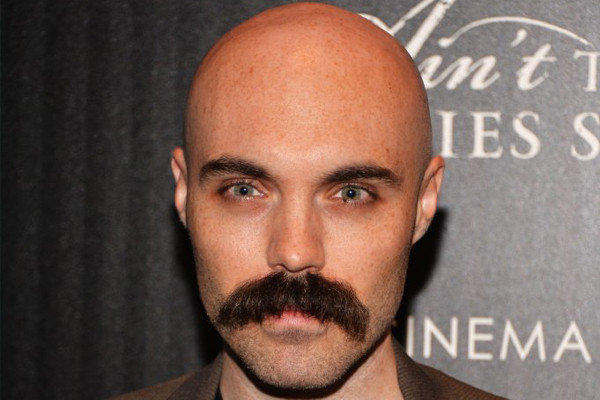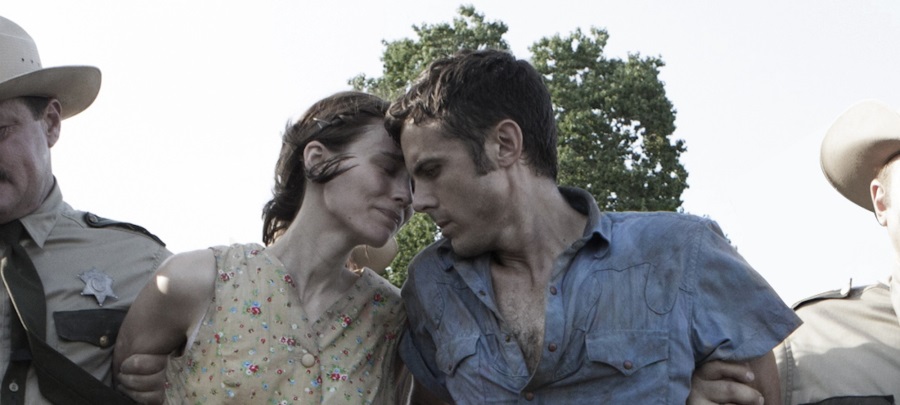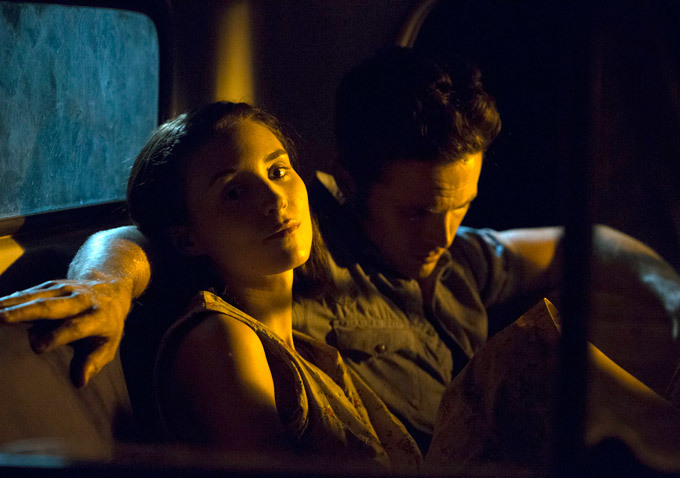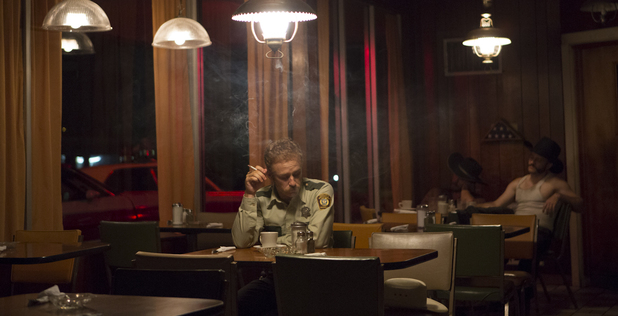Ain’t Them Bodies Saints, the second feature from David Lowery, plays like the cinematic answer to an outlaw folk song. It’s out of time, an existence in the smudge between the Great Depression and the seventies recession in a rural Texas town where nothing has changed in decades, including the outlaw culture where crime is simply another way of life. There’s a poetry to it all but this is hardly a romantic vision of the criminal on the run. This life doesn’t offer happy endings. The closest you get is kindness and compassion, and Lowery has plenty of that.
David Lowery brought his film to the Seattle International Film Festival in May, 2013, where we talked about his storytelling, the amazing textures and light in his film, and what he’d been watching.
 Sean Axmaker: What are you watching?
Sean Axmaker: What are you watching?
David Lowery: What happened at Cannes was that the programmers for Critics Weeks were all having lunch and talking about the movie and they asked me if I was more influenced by John Ford or Howard Hawks. I said, To be honest, I didn’t think about either of them that much until the post-production process, and then as we were cutting it I was watching John Ford movies and taking into account how we were cutting, thinking, Okay, what would be a more classical way to do this? There are a couple of cuts in the movie that I feel I owe directly to John Ford movies. So anyway these programmers were arguing, they had literally gotten into a very passionate discussion about John Ford and Howard Hawks and that made me think that I need to, having caught up on and revisited a lot of John Ford movies last fall, I need to go revisit some Howard Hawks movies. Because they ultimately decided that my movie was a Howard Hawks movie and I was like, I’m going to trust you on that. So actually, that’s what I’m watching now. I rented a bunch of the classics. I’ve seen “Rio Bravo” and I’d seen a lot of the Cary Grant comedies, but I’m not really educated in what makes a Howard Hawks movie a Howard Hawks movie, so I decided to dive into that.
SA: Which movies have you liked the most so far?
DL: Rio Bravo is amazing and I watched the original Scarface. It feels like it’s rough around edges to a certain degree but it was terrific to watch that early work coming to fruition. Those are the two I’ve watched so far. I literally started watching when I got back from Cannes the other day. For the plane ride tomorrow I don’t remember what I have loaded up, it might be His Girl Friday.
SA: Are these discs or downloads?
DL: Most of these are iTunes. I love renting things on iTunes. I like paying for things, I will watch things more often if I pay for it. I have Netflix and I never watch anything because it’s always there, so if I make the effort to pay for something, I know I’ll watch it and watch it in a more expeditious fashion. And I do also buy discs and I live down the street from the one great video store in Dallas so I rent things as well, but when I’m travelling I put it all on my iPad and iTunes is great for that.
SA: Well for what it’s worth, I wasn’t thinking about either John Ford or Howard Hawks when I was watching Ain’t Them Bodies Saints.
DL: I certainly wasn’t thinking about them when I was making it. It wasn’t until post-production.
SA: Within the first two or three scenes, I was thinking about Thieves Like Us and They Live By Night, the idea that these young outlaws were born into this world and living in a perpetual depression.
DL: I’m really glad you brought up They Live By Night because that’s one that I watched for the first time while I was at one point in the screenwriting process. The script was done and I don’t know if it was after we cast it, but I watched it and something I love about that movie is the way the last act, or almost the last act—the act breaks are weird in that movie—but it turns into this extended chase sequence that starts off feeling like it’s going to be just a small aside, it’s not going to be the climax of the movie, and it turns into this great mountainside chase sequence and it’s really intense and that becomes a huge part of the movie. And then you’ve got the thing with the ma, which is extended as well, but that was something I thought about a lot in terms of how our movie finally moves towards what might be considered the one action scene and then takes on unexpectedly epic proportions, to some extent, at least.
SA: And I really enjoyed how we learned more about the characters through the course of the film. You don’t make a point of making them mysterious, you simply throw us into the middle of their lives without an introduction and we get references to this and that and fill out this sense of their lived histories.
DL: I love the idea of characters with history and I love the idea that people live in a world where everyone just understands what’s happened and they don’t need to talk about it. So if you drop into the middle of it, you might pick up a reference here and a reference there to something that’s happened and gradually you put together a patchwork understanding of who someone is and where they’re coming from, but no one ever sits down and just talks about, you know, does the whole David Copperfield thing: “I was born…” No one every pauses to do that so you just piecemeal it together. And as an audience member I love that. I love getting these cyphers, so to speak, and gradually through decoupage figuring out who they are as human beings and what their history is. And that’s a fun way for me to write characters. I always fall back on this description of it: I start off with an archetype and just gradually figure out what it is that makes them a full-fledged human being. I think with this movie, you start off throwing these people up there in archetypal relief in the beginning of the film and gradually, with the information you get, it chips away at the edifice of the archetypes. A little snippet of information here, another one there, and gradually you realize that they’re actually people and not these grand, mythic figures that Casey [Affleck’s character], at least, thinks he is.
SA: They are also not their backstory. They are who they are in the moment.
DL: Very much so. Everything has led them up to this point but they’re not… I could talk for twenty minutes about the relationship between Keith Carradine and Casey and Rooney’s characters, but that’s not what I wanted the movie to be, so we had it there, we knew what it was, and if we could make a reference to it obliquely, sure. But it wasn’t what the movie was about and I didn’t want to spend much time reminiscing, even though they do towards the end of the movie because everything’s falling apart. At the outside, you just jump in.
SA: Your cinematographer, Bradford Young, is amazing. I’ve only seen a couple of the many films he’s made, and they don’t look anything like Ain’t Them Bodies Saints.
DL: I’d seen Pariah, which won the cinematography award at Sundance two years prior, and I was meeting a lot of cinematographers and talking to a lot of them. Everyone was incredibly talented and their work was great and some of them were people who I’d admire for years that I was surprised wanted to do this film. And I met Brad and was instantly… You want to have like a psychic connection with your collaborators, you always want to have that twins syndrome, where you finish each other’s sentences, and Brad was instantly on that level. I hadn’t seen anything that he had done that looked the way I wanted this movie to look, but everything he had done was so wonderful, so beautiful, and there were things about it that I knew that I could use as touchstones, but more than that I knew that he had an immense talents.
When we began working together, we went through old photographs, we looked online and tried to find all sorts of reference materials, and then gradually distilled those down to just five or six pictures that represented the colors, the textures, the way we wanted the night scenes to look, and really just came up with a very deliberate and very carefully planned visual guide for the film. And we did a lot of tests as well. You always think the things that make up an image in a film are the lenses, the medium, whether it’s film or digital—in this case we were using film—and then which film stock you use, but one thing people don’t think about a lot is how that film was processed and that was something that Brad was really excited to experiment with and to test out and to research. We did a day of shooting film tests and then tried out different ways of processing it in different chemical combinations and found out exactly the right way to get what we hoped would be a film that looked like a piece of wood. We always described it as we wanted a movie to have perfect clarity and yet look like it was shot through a burlap sack. There’s a really fine like between a grainy image and a perfectly clear image and we tried to find that point where you could feel the image, where you feel like you could just reach out and scrape your hand across it and feel it, and yet at the same time it never felt like an underexposed image that was grainy because there wasn’t enough light. Finding that fine line was a long process and on the set itself it was difficult to get the light right. There was a lot of finessing a scrim here, a fader there, trying to get exactly the right level so the exposure would be what we needed to pull that texture out of the image. About halfway through the shoot we were like, Maybe we bit off more than we could chew, we only have 28 days to shoot this movie and this is taking so long. But it really paid off.
Ain’t Them Bodies Saints is available on Blu-ray, DVD and Digital from MPI on Tuesday, December 17.



